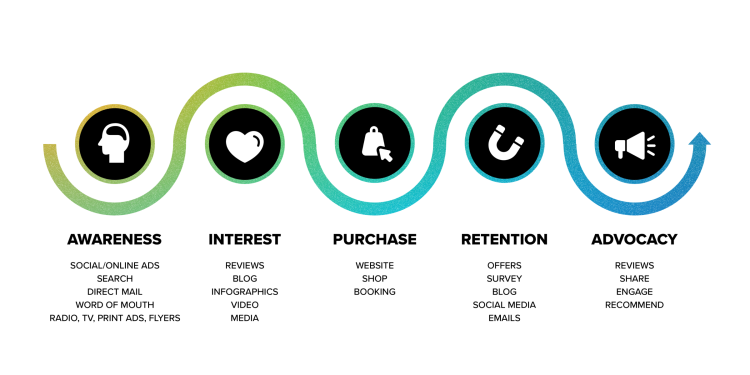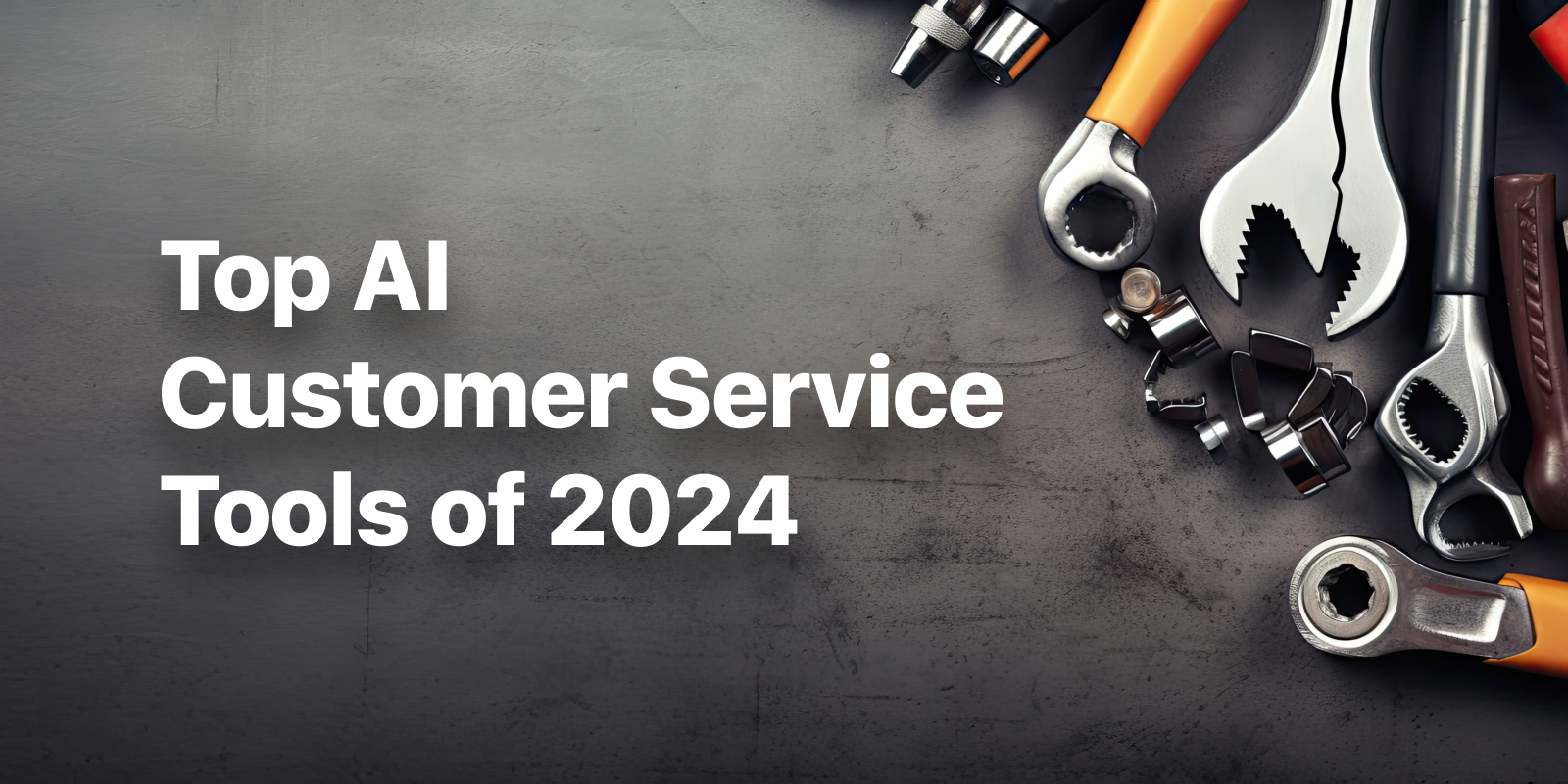Imagine one of your customers, a tech enthusiast eager for the latest smartphone, stepping into your e-commerce website. Their excitement is evident, fueled by weeks of anticipation and research.
Yet, as they venture deeper, their enthusiasm begins to ebb. They're met with a maze of catalogs, each turn taking them further from clarity and closer to frustration. The smartphone section, when they finally find it, offers no solace. The website chatbot is eager to gather their contact details but is clueless about product or pricing information. The customer service number is perpetually busy, unable to guide them through the decision either.
This isn't just a story of a lost sale but a vivid reminder of the critical touchpoints in a customer's journey through your store.
Just like a small bump can trip you up on a smooth path, small issues in your digital storefront can turn eager smartphone buyers away. Using customer journey maps helps you understand and optimize these complex, often non-linear routes your customers take.
What is a customer journey map?
A customer journey map is a visual representation that captures the complete of a customer interacting with a service or product, from initial awareness to post-purchase support. It outlines each step a customer takes, highlighting their feelings, motivations and pain points.
Think of customer journey mapping as planning your dream vacation.
Just as you'd pick a destination, figure out how you're getting there, plan your route and iron out the trip's details — customer journey maps work in a similar way.
They lay out the stages of the customer's journey, how you judge if you're on the right path, the actions you hope they'll take (like signing up, registering, or making a purchase), and the strategies you'll use to make those actions happen.
Customer journey map vs. Customer experience map
Aspect | Customer Journey Map | Customer Experience Map |
Focus | Linear progression through stages from awareness to loyalty | Holistic view of all interactions, including emotional aspects |
Objective | Identify and optimize key steps and decision points | Understand emotional and perceptual aspects of customer interactions |
Detail Level | Highlights specific steps and actions | Delves into emotions, perceptions and satisfaction at each point |
Use Case | Streamlining processes and improving conversion points | Enhancing customer satisfaction and emotional connection |
Outcome | Improved efficiency and effectiveness of the customer journey | Deeper customer insights into their feelings and loyalty drivers |
Benefits of customer journey mapping for businesses
Memorable customer experiences don’t happen by chance. They are a product of always-on customer journey mapping. Let’s understand the benefits of using customer journey maps.
Shifts perspective: Customer journey mapping offers a fresh lens, turning your attention away from just the internal workings to the actual experiences of your customers.
This change in viewpoint is crucial. It helps you understand your business not just as a provider of products or services but as a part of your customer's daily lives, revealing insights into their challenges and delights that you might have overlooked.Encourages teamwork: By laying out the customer journey for all to see, this tool acts as a bridge between departments, fostering a sense of unity and collaboration.
It's no longer about marketing, sales or customer service working in silos but coming together to smooth out bumps in the customer's path. This collaborative effort leads to a more cohesive and satisfying experience for the customer, reflecting positively on the brand.Defines responsibility: It's easy for tasks to fall through the cracks when it's unclear who's responsible for what.
Customer journey mapping assigns clear ownership of each customer touchpoint, ensuring that every interaction is thoughtfully managed. This not only improves the quality of customer interactions but also boosts accountability and efficiency within the team, leading to a more streamlined operation.Great customer experiences: Mapping the customer journey does more than just highlight diverse customer needs — it invites you into their world. It helps you acknowledge their different preferences to craft experiences that speak directly to those differences.
For instance, if retirees and tech-savvy Gen Z are both your customers, their paths and pain points diverge significantly. Personalizing means adjusting your communication, offers and support to resonate deeply with each group, flipping a generic service into an experience that feels uniquely designed for them.Turns data into action: Think of client journey mapping as turning into Sherlock Holmes, where every piece of data is a clue into what your customers really want.
For example, if you notice any drop in their purchase at the shipping page, giving an uptick in your cart abandonment rate, it's a sign they might find shipping costs too high or are unable to get past the payment gateway. Acting on this, you could test offering free shipping over a certain amount or assess your payment integrations.
How to create a customer journey map [+Best Practices]
Creating a customer journey map is like storytelling for your business, where the story you're telling is your customer's experience from start to finish. Here's a guide to creating a customer journey map.
Start with understanding your customer: Your customers are already expressing their emotions online, and all you have to do is tune in. Start by immersing yourself in the world of your customers to create a journey that sets your brand apart. Use social media listening and in-depth interviews to gather rich, nuanced understandings of how customers feel about your brand.
An advanced social listening platform goes beyond simply tracking mentions of your company and gathering posts that refer to your brand, relevant products, services, hashtags, and keywords.
Moreover, it enables you to categorize sentiments as positive, negative or neutral, revealing areas for improving CX and providing valuable insights for training your customer service reps.
Define the journey’s purpose: Decide whether you’re charting a journey that already exists or imagining a new one. This is about setting the stage: Are we looking at the path customers currently tread, or are we paving a new one? Understanding the journey's goal helps tailor your map to real or anticipated experiences — ensuring it serves a clear, strategic purpose.
💡Pro tip: Record the frequency and recency of pain points customers have. Are they existing issues or emergent? For example, you may discover that updating your service reps' hardware or customer service software could help them marry the many disconnected journeys and bring in much lesser average handle times.
Detail every step: Break down the journey into stages, identifying what customers do, think and feel at each point.
What delights them? What frustrates them? Each stage is a chapter in their story with your brand, filled with opportunities to connect and improve. Journey maps are particularly effective for outlining processes that progress through multiple stages, such as signing up for a service or using an app for the first time.
💡Pro tip: Find out the channels they frequent. Customers today expect to be able to hop around on channels with service agents having seamless context flows. That’s what a truly omnichannel customer experience looks like. Your customer journey map needs to account for the factors that dictate and influence their channel choices.
Analyze and assign actions: With the map laid out, identify where the journey falters and where it flourishes.
What needs to change to smooth out the rough spots? Who in your team is best equipped to make these changes? Assign responsibility clearly, turning insights into a roadmap for enhancing the customer experience.
💡Pro tip: Using a comprehensive Supervisor Console can help you get a broader and granular vantage point into your team’s capacity and expertise. With a detailed overview and clearly quantified customer service metrics, you can easily double down on the best-equipped people to take responsibility for specific customer touchpoints.

Lead with empathy: A customer journey map is a living document, evolving as your customers and your business do. Revisit and revise it regularly, always with an ear to the ground, listening for shifts in customer needs.
Imagine a café owner who, after noticing a dip in afternoon visits, decides to map out her customers' journey.
Through conversations and social listening, she discovers her patrons crave a quiet place for midday work. Responding, she creates a "quiet hour" with Wi-Fi boosts and special offers on coffee. As months pass, customer feedback leads to further tweaks, like adding power outlets and meeting spaces. This may help you understand how a customer journey map isn't a static blueprint but a dynamic guide that adapts to the real-time voice of customer.
5 Types of client journey mapping
Let’s look at five types of customer journey maps that serve their specific purposes.
🕜Current experience map: This map captures the customer's journey as it unfolds today, highlighting every interaction with your product or service. It's a reality check that surfaces what works, what doesn't and where you can improve, offering a baseline for strategic growth.
💬Aspirational journey map: Imagine how your customer would ideally interact with your brand without the limitations of your current setup. This visionary map encourages bold thinking and innovation, serving as a guide for what you aim to achieve in improving customer experience.
🔲Big picture map: This type of map zooms out to show the overarching goals and dreams of your customers, providing a strategic overview that leads to long-term planning. You’re basically setting up the stage for the future, where every customer interaction contributes to a larger narrative.
🔛Focused interaction map: Dive deep into specific customer interactions, such as signing up for a newsletter or using a feature for the first time. This detailed map helps you refine these moments, making sure they're as smooth and satisfying as possible.
🚺Persona-driven map: Tailored to individual customer personas, this map explores the journey from the perspective of different user types. It sheds light on unique challenges and preferences, allowing you to customize experiences that resonate with each segment of your customers.
Examples of successful customer journey maps
Now, let’s take a look at a few inspiring examples of well-defined customer journey maps that yield tangible business benefits.
Example 1: A current experience map to uncover market threats and consumer behaviors
Telus, a Canadian telecommunications company, partnered with Bridgeable, a service design firm, to chart the customer journey for the purpose of restructuring their mobile service contract renewal process.
The company entered the journey mapping process with the assumption that their customers prefer to start and complete the renewal process via a single channel of communication, for instance, a call center. However, on deeper analysis, they uncovered their customers’ preference to channel-hop and use a variety of touchpoints for researching renewal plans and products before arriving at a final renewal decision.
During this exploration, they identified two distinct customer behavior streams. The first group of "passive optimists" tended to accept the options provided by the telco. The second group of "proactive warriors" actively sought better deals through various channels, such as the Telco website, customer support calls, and in-store interactions.

With the insights gained from mapping the customer journey, the company designed an omnichannel journey that offered consistent recommendations for each customer, no matter what channel they chose for research and renewal. The end result? Improved adoption of low-cost channels by customers, which lowered the overall support cost for Telus.
Your takeaway: Before redesigning a product or service, understand your target customer’s perspective, even if it contrasts with your assumptions. Your customers’ pain points and the business problem you aim to solve are always entwined.
Sprinklr’s two cents: Leverage a channel-agnostic and AI-powered customer experience management (CXM) platform to unsilo touchpoints and democratize customer insights. Unified insights will lead to more realistic customer profiling and more targeted products and campaigns.
Example 2: A big-picture journey map to tap into real-time customer goals and desires
In 2021, India’s largest tech wearable brand, boAT, embarked on a digital transformation journey built atop their customers’ in-the-moment needs and desires. To capture these, an AI-powered customer experience platform that cuts through the noise to reach relevant customer conversations across channels was needed. Sprinklr’s AI engine followed boAt’s customers as they moved from awareness to consideration to purchase, voicing the challenges they faced during their journey with the brand.
Prior to Sprinklr, boAt’s approach was more reactive and escalation-led, reliant on archaic documentation tools like spreadsheets. There was little scope to incorporate context and case history to help the handling agents deliver accurate, timely solutions.
“We didn’t have data around the kind of experience our customer service officers were delivering or how efficiently teams worked. Neither did we have a source of truth that we could use to train new employees.”
Rakshit Gupta
CXO, boAt
Sprinklr’s suite of tools – Sprinklr Insights and Sprinklr Service specifically – solved these issues via:
Social listening dashboards that capture customer sentiment and brand mentions
A unified agent desktop that renders complete context on every ongoing case
With a finger on its customers’ pulse, boAt has been able to pivot from reactive to proactive engagements, serving seamless experiences that the modern customer craves.
Sounds too good to be true? Take Sprinklr for a free trial and witness the results firsthand.
Frequently Asked Questions




